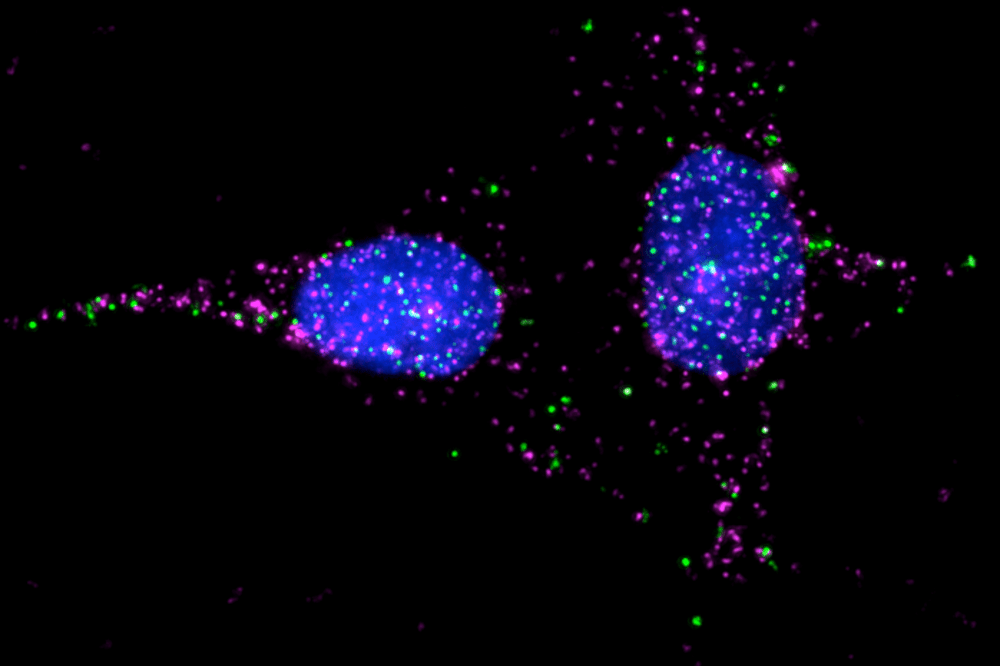A single superfamily of receptors found on the surface of human cells is the target of one out of every three FDA-approved medications. These receptors allow beta blockers and antihistamines, among other vital, life-saving drugs, to initiate complex biochemical pathways that ultimately prevent heart attacks or halt allergic reactions in their tracks.
 A suspension bead-array immunocapture assay was used to define the interactome of 221 GPCRs and three RAMPs. Image Credit: Yuanhuang Chen
A suspension bead-array immunocapture assay was used to define the interactome of 221 GPCRs and three RAMPs. Image Credit: Yuanhuang Chen
However, research has shown that this is a far more nuanced picture than scientists first thought, with several of these medications targeting a complex made up of one receptor and one related protein.
A recent study published in Science Advances describes a novel method for identifying the interactions between these receptors, which total 215, and the three proteins with which they form complexes. The discoveries significantly deepen the understanding of these relationships and their possible medical applications.
On the technical side, we can now study these receptors at an unprecedented scale. And on the biological side, we now know that the phenomenon of these protein-receptor interactions is much more widespread than originally thought, opening the door to future investigations.”
Ilana Kotliar, Study First Author, The Rockefeller University
Kotliar is also a former graduate student in Rockefeller’s Laboratory of Chemical Biology and Signal Transduction, headed by Thomas P. Sakmar
Uncharted Territory
This group of receptors is known as GPCRs, or G protein-coupled receptors, and their associated accessory proteins are called RAMPs, short for receptor activity-modifying proteins. By modifying the form or location of GPCRs, RAMPs can significantly modify the way these receptors send signals.
They also assist in delivering GPCRs to the cell surface. Since GPCRs rarely exist in a vacuum, identifying a GPCR without taking into consideration how RAMPs could affect it is similar to knowing a restaurant's menu without also looking up the place's hours, address, or delivery possibilities.
You could have two cells in the body in which the same drug is targeting the same receptor but the drug only works in one cell. The difference is that one of the cells has a RAMP that brings its GPCR to the surface, where the drug can interact with it. That is why RAMPs are so important.”
Sakmar, Richard M. and Isabel P. Furlaud Professor, The Rockefeller University
Acknowledging this, Sakmar and associates were committed to creating a method that would enable scientists to isolate the impact of every RAMP on every GPCR. Drug development would be greatly accelerated by a thorough mapping of GPCR-RAMP interactions, which would also perhaps illuminate the reasons behind the unexpected failure of certain promising GPCR medicines.
In addition, they believed that by identifying the natural ligands that some so-called "orphan" GPCRs interact with, such a map would advance basic biology.
We still do not know what activates many GPCRs in the human body. Screenings may have missed those matches in the past because they were not looking for a GPCR-RAMP complex.”
Ilana Kotliar, Study First Author, The Rockefeller University
It was a difficult endeavor to sift through every GPCR-RAMP interaction. It was impractical, if not impossible, to search through every potential combination with three known RAMPs and almost 800 GPCRs.
To develop an assay that could test for GPCR-RAMP interactions, Emily Lorenzen, a Graduate Student in Sakmar's lab at the time, teamed up with researchers from Sweden's Human Protein Atlas Project and the Science for Life Laboratory in Sweden in 2017.
Hundreds of Experiments at once
First, the group attached antibodies from the Human Protein Atlas to magnetic beads that had previously been dyed with one of 500 possible colors. Then, a liquid mixture of modified cells expressing different combinations of GPCRs and RAMPs was incubated with these beads.
With this configuration, researchers might screen hundreds of possible GPCR-RAMP interactions concurrently in a single experiment. Color coding was employed to identify which GPCRs were bound to which RAMPs as each bead passed through a detection apparatus. This allowed for high-throughput tracking of 215 GPCRs and their interactions with the three known RAMPs.
Sakmar said, “A lot of this technology already existed. Our contribution was an enabling technology built upon it. We developed a technique to test for hundreds of different complexes at once, which generates a huge amount of data, and answers many questions simultaneously. Most people do not think in multiplex terms. But that is what we did 500 experiments at once.”
Even though this study is the result of many people working together over a lengthy period, Kotliar put forth incredible effort to see it through to the end, shipping uncommon reagents and samples back and forth from Sweden during the rare travel periods for COVID.
It was profitable. For GPCR researchers and medication makers, the data offer several much-needed resources: engineered GPCR genes, publically accessible online libraries of anti-GPCR antibodies, and course, the mapped relationships.
“You can now type in your favorite receptor, find out what antibodies bind to it, whether those antibodies are commercially available, and whether that receptor binds to a RAMP,” Sakmar said.
The results establish the foundation for methods that may aid in the detection of GPCR combinations and the identification of dangerous autoantibodies. They also increase the number of GPCR-RAMP interactions that have been experimentally detected by an order of magnitude.
Sakmar said, “Ultimately, it is a technology-oriented project. That is what our lab does. We work on technologies to advance drug discovery.”
Source:
Journal reference:
Kotliar, I. B., et al. (2024) Multiplexed mapping of the interactome of GPCRs with receptor activity–modifying proteins. Science Advances. doi.org/10.1126/sciadv.ado9959.